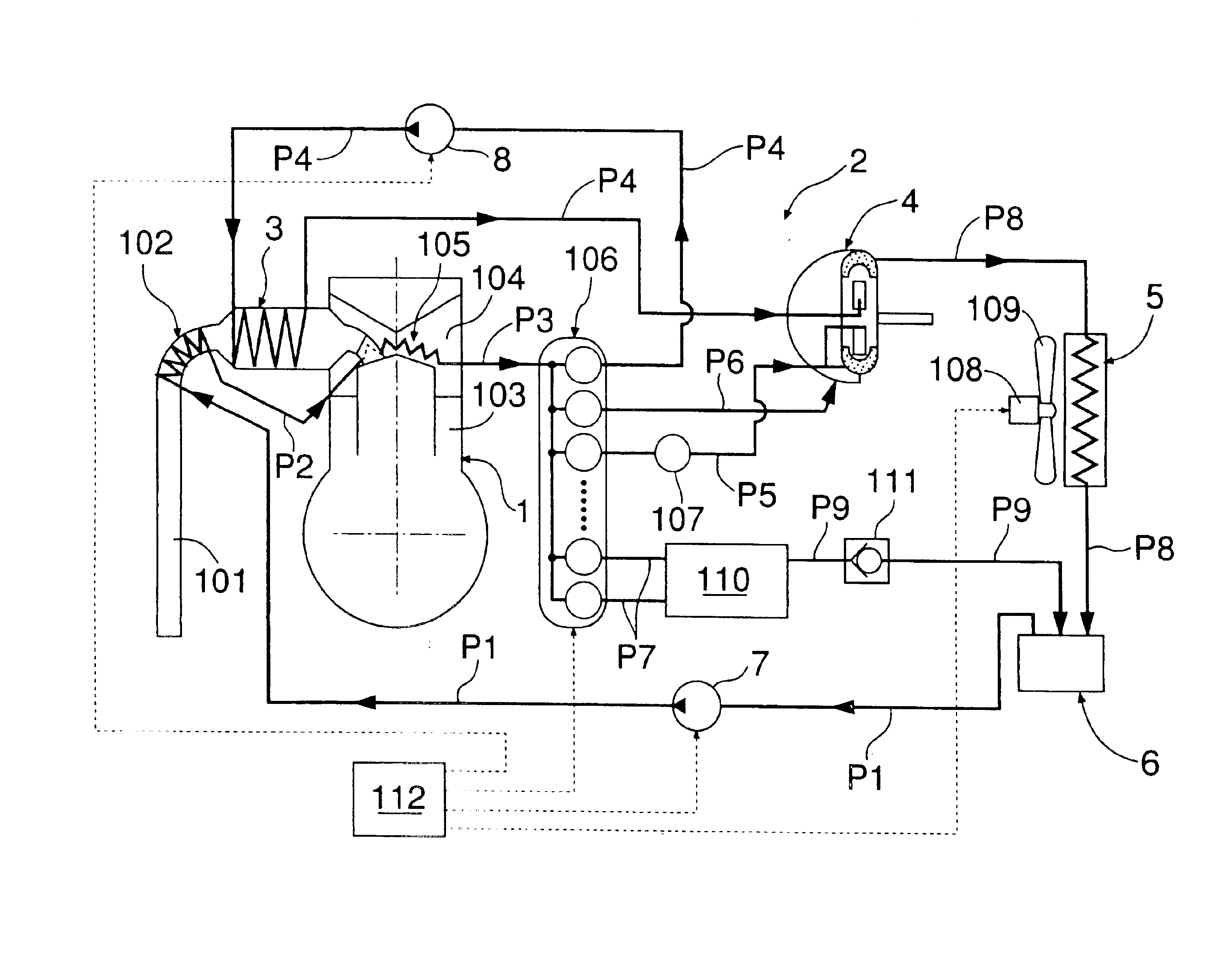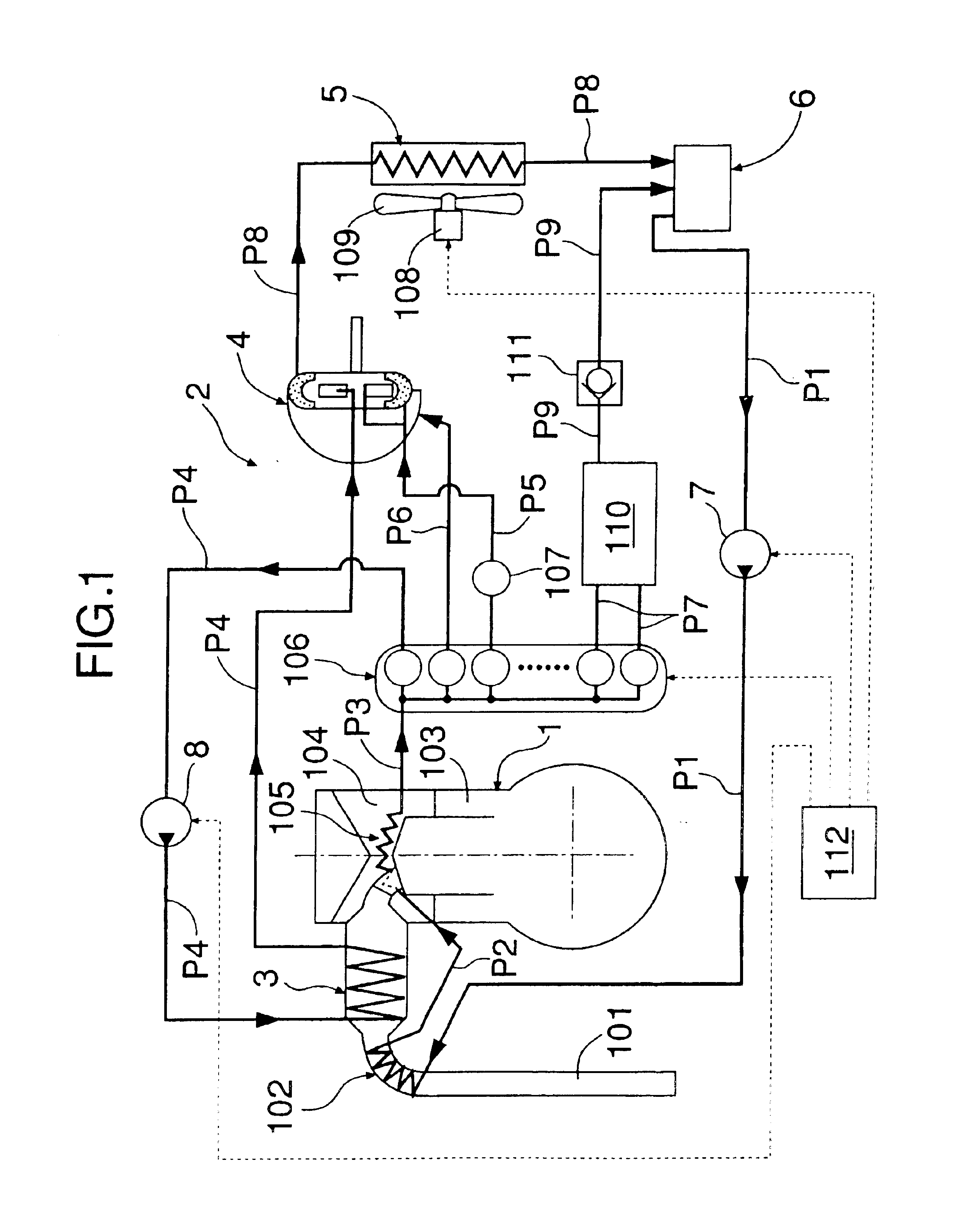Rankine cycle device of internal combustion engine
a technology of internal combustion engine and cycle device, which is applied in the direction of steam engine plants, machines/engines, mechanical equipment, etc., can solve the problems of large difference between the pressures, combustion engine overheating, and rankine cycle system cannot exhibit a sufficient performan
- Summary
- Abstract
- Description
- Claims
- Application Information
AI Technical Summary
Benefits of technology
Problems solved by technology
Method used
Image
Examples
Embodiment Construction
As shown in FIG. 1, a Rankine cycle system 2 for recovering a heat energy of an exhaust gas from an internal combustion engine 1 to output a mechanical energy includes an evaporator 3 for generating a high-temperature and high-pressure vapor by heating water using the exhaust gas from the internal combustion engine 1 as a heat source, an expander 4 for outputing a shaft torque by the expansion of the high-temperature and high-pressure vapor, a condenser 5 for cooling a dropped-temperature and dropped-pressure vapor discharged from the expander 4 to liquefy it, a tank 6 for storage of the water discharged from the condenser 5, and a lower-pressure pump 7 and a higher-pressure pump 8 for supplying the water in the tank 6 again to the evaporator 3.
The water in the tank 6 is pressurized to 2 to 3 MPa by the lower-pressure pump 7 disposed on a passage P1 and passed through a heat exchanger 102 mounted in an exhaust pipe 101 for the internal combustion engine 1, where it is preheated. The...
PUM
 Login to View More
Login to View More Abstract
Description
Claims
Application Information
 Login to View More
Login to View More - R&D
- Intellectual Property
- Life Sciences
- Materials
- Tech Scout
- Unparalleled Data Quality
- Higher Quality Content
- 60% Fewer Hallucinations
Browse by: Latest US Patents, China's latest patents, Technical Efficacy Thesaurus, Application Domain, Technology Topic, Popular Technical Reports.
© 2025 PatSnap. All rights reserved.Legal|Privacy policy|Modern Slavery Act Transparency Statement|Sitemap|About US| Contact US: help@patsnap.com



